Due to an explosion of information, it sometimes takes longer to sift and find pertinent data than it does to read it!
And health advice is no exception. With baby boomers being such a large, often affluent demographic, many ‘Experts’ have jumped on board proffering advice, tips, stretches, lunges, dips, recipes, mantras and more, all intending to make seniors healthier.
Confused by all the advice? Wouldn’t fault you if you were.
To save you sifting through all the information out there, we’ve gone ahead and asked 40 known Health Experts to boil down all their wisdom into a couple of bite-sized chunks.
Specifically, we wanted to know: If you could only recommend 2 exercises for seniors, which 2 would you recommend?
Here’s what they said…
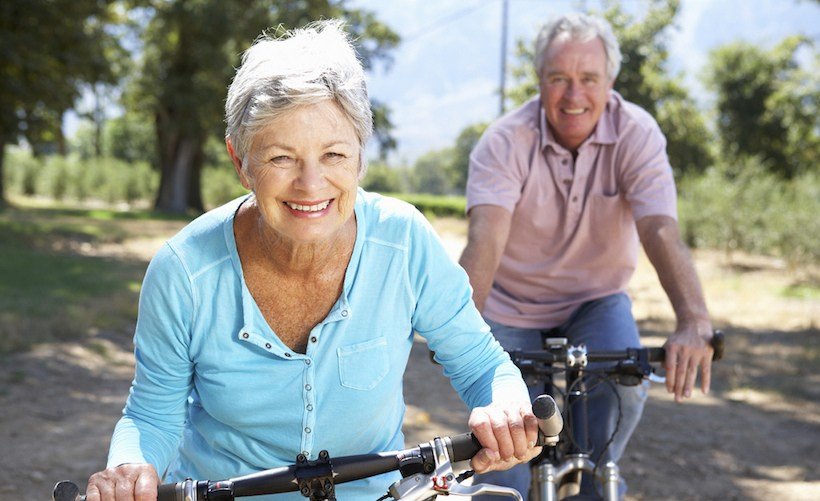
Tara Marie Segundo, M.A., Personal Trainer – TaraMarie.com

TOP TWO SENIOR EXERCISE RECOMMENDATIONS
If I were to advise seniors on my top two exercise recommendations, I would emphatically offer this advice (this is the same advice I give to my 83-year-old father!)
1. Two words – Resistance Training:
Aging is associated with frailty, and it need not be. Seniors can remain active, self-sufficient, and able to do activities of daily living their whole lives by keeping muscles and bones strong. Strong seniors feel more confident and less dependent on others, which is good for their outlook on life and self-esteem.
Resistance training, whether using free weights, machines, bands, tubing, or even soup cans builds muscle, ligaments and tendons surrounding joints, and strengthens bones. When the surrounding muscles and ligaments and tendons of a joint are strong, the joint itself is better protected. This is especially important for stabilizing hips, knees, and ankles.
2. Weight-bearing Cardiovascular Activity:
Examples of weight-bearing cardiovascular activity are walking, jogging, stair climbing, dancing, using an elliptical machine, roller skating, or even mowing the lawn with a manual mower–anything that requires you to literally “bear” your own weight constitutes weight-bearing activity. This kind of exercise builds bone strength, and with fractures of the hip and spine occurring at an increased rate in this population, it’s important to take every opportunity to increase bone mineral density.
Swimming and riding a bike are examples of NON-weight bearing activity, as you don’t have to manage your own body weight while sitting on a bike or moving through water.
For heart health, seniors should do a minimum of 3 weekly sessions of brisk weight-bearing cardiovascular exercise for 20-30 minutes. More is better! I advise my clients to move as fast as they can and their bodies will naturally slow the pace when they’re pushing past their limits. Seniors with cardiovascular risk factors can wear a heart rate monitor to stay within a pulse rate range specified by their doctor.
Bonus Tip:
Seniors can incorporate exercise into everyday life by practicing some of these habits: get up and down from a chair without using your arms or choose to carry a basket at the grocery store rather than push a cart. While standing at the sink washing dishes, alternately bend one knee and stand on a single foot for as long as can be tolerated. The “use it or lose it” rule applies to our strength and one need not be doing formal exercise to strengthen muscles!
Mark Sherwood, The President And Founder of 4E Fitness – 4EverFitLife

Seniors is a really broad definition. In this case, I will approach the question as I am addressing an older senior with greater risk of injury.
1. The first activity that I recommend is walking. This not only is safe, fun, and very beneficial activity; it is excellent for relaxing the mind. Seniors should select a walking partner(s) in which to talk and reminisce about the great memories.
2. Staying flexible is also key. I recommend very consistent stretching that is slow and controlled…no bouncing or ballistic moves. This stretching could also include moderate yoga.
Paul Boisvert, Ph.D., Coach Poids Sante – Paulboisvert.qc.ca

My Top 2 fitness advices for seniors are
Advice 1
Walk fast outside for 150 min a week, which represents 15 km; that could be done 5 times 30 min or 3 times 50 min. Walking is the best exercise for the elderly because it is a moderate intensity exercise good for weight control, good for the joints and easy to do every where by everybody.
Advice 2
Yoga is a great exercise routine for the elderly because it helps to strengthen muscles, improve equilibrium, manage stress and take care of yourself, which are all aspects that could be beneficial for a balanced life and healthy lifestyle in seniors.
Angie Lee, Fitness Instructors, The Founder of FightWorksNYC – AngieLeeFit

I certainly recommend weight lifting for seniors, under the supervision of a qualified trainer.
As we age we lose bone density and muscle mass. Weight-bearing exercises result in stronger bones (less chances fractures) and stronger muscles will make physical tasks easier. We can also add the psychological benefits, especially since looks start to decline with age.
I also recommend basic joint mobility exercises, to keep the joints lubricated and maintain adequate range of motion.
Laury Reiken, Yoga Instructor, Personal Trainer, Fitness nutritionist – TheFitnessDish

I would say the most important things that seniors can do to stay fit and healthy is to have fun. Keep moving and choose activities you enjoy, that aren’t too rough on the joints. Swimming is an excellent form of exercise that provides both cardiovascular and strength benefits, while not putting any unnecessary pressure on bones and joints. Yoga is another form of exercise that I am a huge fan of…whether you’re a child or a senior citizen, and everyone in between. There are countless benefits, especially for seniors. Yoga will help with age-related issues such as fatigue, body aches and pain, and even hormonal issues. It helps with balance and core strength as well which is extremely important as you become more prone to falls and injuries. Practicing yoga a few days a week alternating with some pool-time activities is an excellent way to stay fit, healthy and young later in life!
Dr. Yolanda M.Loafer, Chiropractic Physician – DrYolandaLoafer

My TOP TWO for Seniors are these:
1. One Leg Standing (almost like the tree but with knee up as high as the hip joint)
2. Gait Training (walking with correct head turns)
These two exercises are used exclusively in my office for the aging population. We NEED to prevent falls and these will do that by exercising the balance centers of the brain.
The exercises strengthen all of the spinal postural muscles including all core muscles and hip musculature. Both are amazing exercises!
Dr. Scott Howitt, Sports and Rehabilitation Specialist Chiropractor – SportsPerformanceCentres

2 exercises for seniors…
Well obviously we would want everyone to be engaging in regularly walking – but specific exercises…
In debatable order – the squat, and single leg balance exercises. (These exercises are most consistently linked to living long and living well)
Off the top of my head these 2 tips are most related to function and independent living.
We all understand that falling is bad and that balance is best defense, walking is a series of standing on one leg. Getting in and out of a car requires lifting one leg up.
Squat is analogous for getting up and down from a chair (or a toilet) the inability to squat is often a precursor for needing assistance.
Don’t forget all weight-bearing exercise (standing on your feet / or 1 foot) provide stimulus for bone… so you also get that benefit!
Charlene Hutsebaut, B.P.E., B.Ed., CSCS – CharleneHutsebaut

Using balance and strength training are key ingredients for a seniors workout programme. Balance for staying agile, safe and working the postural muscles and weight training for keeping functional and strong as well as maintaining solid bone health. These types of workouts can be done at any age with gains and results.
Manal Alzayani, Master Personal Trainer, Fitness, Motivation and Lifestyle Coach – FitOlogy-BH

Usually older adults who are over 50 suffer from loss of bone density, loss of muscle mass, they are at higher risk of falls and they have reduced cardiovascular function and lose their functional strength!
Benefits of training for older adults are:
- Reduces the risk of CV disease, hypertension, strokes, Type 2 diabetes, osteoporosis, obesity, cancer, stress and depression.
- Reduces effects of stress and depression, improves sleep, digestion, metabolic rate, balance and coordination and improves self-confidence.
- Stronger bones and muscles.
- Increase BMR/ Weight management.
- Greater functional strength.
- Less falls.
- Social contact, improves self esteem and improves quality of life (“adds life to years not just years to life”)
There are some guidelines to follow to get maximum benefits of their training and avoid injuries:
- Longer warm-up and cool-down.
- More mobility exercises.
- Resistance training 2 X Week, 8 – 10 exercises with 10-15 repetitions) targeting different kind of muscles.
- Moderate CV training for 30 mins, 5 X week, or vigorous exercise for 20 min, 3 x week) with stretches and flexibility training for at least 10 minutes each session.
Some precautions:
- Make sure to consult your physician and do a full check up before starting your exercise regime.
- Slow progress to avoid injuries and confusion.
- Care with balance and mobility issues.
For endurance training you can try walking, jogging, boxing, swimming even biking are all good to increase the heart rate for an extended period of time, and build your endurance gradually, starting with as little as 5 minutes of endurance activities at a time.
For strength training you can try shoulder press, chest press, squats, crunches, bridges, lunges, leg press, TRX exercises or cable machine, make sure you start with low weight and smaller repetitions and start increasing gradually.
Wishing you a healthy and a long life and remember exercise add life to years not just years to life!
Sean Staskin, Personal Trainer – RebuiltByPSFitness
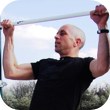
My top 2 tips :
1. Walk every day! At least one 20 min walk, 2 would be better. Not power walking or anything fancy, just walk. Preferably outdoors. Everything is better outside.
2. Some form of strength training. That doesn’t mean you have to lift weights – you can lift yourself. I base my entire training, for myself and my clients, around calisthenics and bodyweight exercises. Squats, push-ups, pull-ups and their variations. There are levels that are suitable for all ages and types.
Dr. Ann Lee, ND, L.Ac – HealthForLife, NaturalFertilityFormula

I actually recommend a vibration machine and yoga!
NASA has done research to show that the vibration machine can help prevent the bone loss that is prevalent when astronauts go into space in zero gravity. The benefits also hold true for seniors battling bone loss. Yoga is a great exercise for seniors as it helps to increase blood and circulation to the joints for greater mobility and prevention of arthritis. Of course, you can overdo yoga, so my advice is to choose gentle forms of yoga and to never follow-through with an exercise that is causing pain. Always ask the instructor if there is an alternate pose that you can do if a certain pose is causing problems.
Dr. Karen Wyatt, Physician, Author, Spiritual Teacher – KarenWyattMD

1. I recommend yoga for seniors because according to the Department of Aging, there are four components to maintaining good physical health as we reach our senior years: strength, flexibility, balance and aerobic capacity. A proper yoga practice can actually develop all four of these capacities, improve your overall health and reduce some of the effects of aging. In addition researchers from Boston University, New York Medical College and Columbia College of Physicians and Surgeons have shown in a joint study that yoga may be effective in treating patients with stress-related psychological and medical conditions such as depression, anxiety, high blood pressure, and cardiac disease. Yoga can also lead to inner balance and harmony because it brings together body, mind and spirit in one activity.
(Here is the link for the article on the study if you need it: Find Yoga Helps Ease Stress Related Medical And Psychological Conditions)
2. I recommend walking for seniors because it is gentle and fairly low-impact for aging joints, and it helps maintain bone density as a weight-bearing exercise. Walking is also beneficial for the cardiovascular system, helps decrease stress, and lessens pain by causing the release of endorphins. Research has shown that walking for at least 30 minutes a day can improve blood pressure, blood sugar and cholesterol levels; reduce the risk of obesity, osteoporosis, breast and colon cancer; and walking also leads to an increased sense of well-being. All of these are issues that become more prevalent with aging, so walking has many benefits for seniors.
Steve Bonthrone, Personal Trainer – StevenBonthronePersonalTrainer

I would recommend strength training and mobility training for seniors to maintain muscle mass and reduce the risk of osteoporosis and also mobility training to help with balance and proprioception.
Two specific exercises I would recommend are a squat and press where the person goes into a squat, holding two dumbbells or hand weights and rises up pushing the dumbbells to the ceiling. People with high blood pressure should just perform the squat until they feel comfortable about adding in the press. The other exercise is a curtsy lunge where they go into a standard curtsy and then add a reach across the body. If the person steps back with the right foot behind the left, they then bring the right hand across to reach in the direction of the right foot. As they progress, they can reach across to waist height or shoulder height. This exercise should be performed on both sides and works all the leg muscles as well as the obliques and the upper back.
James Cipriani, Personal Trainer – JimCipriani

This is an intricate question with a lot of variables to take into account for each individual, but as a majority I would definitely recommend strength training as the main focus. Resistance training will help prevent bone and muscle loss. Within that realm, I highly recommend functional movements that mimic everyday activities. You can take a circuit of resistance training exercises and, while properly executed, enhance flexibility and the cardiovascular system, as well. So although I would like to see all facets of fitness incorporated (strength, aerobic, and flexibility), if having to narrow to just one or list in a hierarchy, strength/resistance training is king.
Troy Tyrell, Personal Trainer – TSquaredVancouverPersonalTraining

If I was to recommend 2 exercises stretching would be first, however stretching correctly is very important, and I wouldn’t recommend doing weight lifting exercises without knowing the person body weight exercises are plenty enough for everyone looking to get fit.
Elaine Ori, Certified Exercise Physiologist, Personal Trainer – DailyChoicesAddup

My top two fitness recommendations for seniors would be (other than just staying active!):
1. Choose weight bearing exercises as often as possible to maintain bone, joint and muscle health (ex. walking, resistance training, yoga, etc.) as opposed to non-weight bearing activities (ex. swimming, cycling, etc.)
2. Try to include daily balance drills to help maintain nerves/nerve signals. Even small, simple ones (ex. stand on one foot for 3 sec.) can have a big impact on balance & joint stability
Tarveen Ahluwalia, Chiropractor – DrTarveen

Dr. Tarveen’s recommendations for the 2 best exercises for seniors:
1. Walking – one of the best forms of cardiovascular exercise that allows you to live your golden years in stride. The nice thing about walking that it is free, low impact and easy to do. All you need is a good pair of walking/running shoes and off you you go. Some of the health benefits of walking include; decreased risk of cardiovascular disease and stroke, improve endurance, improve balance, improve coordination, decrease blood pressure, increase HDL (good) cholesterol levels, decrease risk of diabetes, and less arthritis symptoms.
2. Yoga – is a versatile form of physical activity that is very adaptable to meet your level of physical fitness. Most types of yoga are performed slowly, with minimal impact on your body which also decreases risk of overall injury. Some of the health benefits of yoga include; increase flexibility, increase joint range of motion, better balance, improve core strength, improve coordination, prevent bone density loss, stress relief, better sleep, decrease effects of chronic pain, and improve posture.
Steve Chambers, General Manager at Apple Fitness Centre – Apple-Fitness

My training tips for aged clients are:
1. Weight training or load bearing exercises throughout your life keeps the bone density much higher than a none trainer.
2. With age we tend to lose Speed & Strength so sometimes its good to try and maintain these two aspects of our training as we age. Sometimes a short but intense workout can be more effective than a long steady one.
These advice tips are both generalized ideas but we would assess the capabilities of the individual before administering the workout.
Kevin Richardson, Founder Naturally Intense Personal Trainer – NaturallyIntense

I would emphatically recommend weight lifting– as it’s key to helping you maintain the muscle strength required for you to maintain your independence and reduce the likelihood of falls and injuries and it’s an essential tool to strengthening bones and preventing osteoporosis. I would also recommend light forms of yoga as you can’t just work your body- and it’s a great way to help you relax and work on yourself from an internal point of view.
Dr. Barbara L. Downes, Certified Chiropractic Sports Physician, Clinical Nutritionist/Functional Medicine Specialist in Brain Recovery, Medical Acupuncturist – DownesHealth.com

Best exercise for everything is a hearty walk. This includes high posturing of head and rib cage, long stride and generous arm movements. Imagine making a huge figure-8 with the shoulders at the top, hips at the bottom. The cross mark indicates the belly button which should be pulled in taut, as if to spot-weld it to the front of the spine. Take your 8-gait out at least four times a week for a nice long walk, and smile all the while~
Chris Main, Personal Trainer – UniquePhysiquePT

I think tip number one for seniors is to keep as active as possible. It’s important not only for their health on a cardiovascular level, but also in terms of joint mobility and function.
It’s also important to enjoy life and have fun. The mental decline of our population is very much in the public eye, so as active as people can also keep their minds too, the better quality of life they will have.
Duncan Green, Personal Trainer, Paleo Nutritionist – PaleoPersonalTrainer

The best exercises for seniors would be regular swimming, Pilates and weightlifting – plenty of squats and deadlifts, these great for maintaining muscle and CNS strength and the release of growth hormones benefiting bone density.
Rollie Robles, Personal Trainer – FatX101.com

For a senior, it’s important not only to strengthen the heart, but other muscles as well as bones, ligaments and tendons. Resistance training works well to accomplish this. I would suggest starting with small weights, and using multi-joint exercises with full range of motion. Yoga would also be a good idea in order to enhance and maintain flexibility.
Dr. Jeff W, M.D – JeffreyMD

I think each person’s exercise regimen should be tailored to what their body can handle and what is available to them.
That being said, two exercises I really like for senior citizens in general are water aerobics and tai chi as both are low impact workouts that should be easier on the joints.
Rachel Robertson, Yoga Exercise Specialist – PilatesIsMyLifeStyle
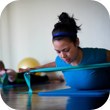
If I were to recommend 2 things to elderly participants for fitness it would be:
1. Pilates is very gentle on the body. It does not a put a lot of stress on the joints because it is a low impact exercise.
Whether they take a mat class or use Pilates apparatus they are able to get a full body workout that can help increase strength, balance, coordination, and flexibility. It is a great form of exercise for any type of person injured, elderly, athletic, first timers etc.
2. The second tip I would give is look into your instructor/trainer’s credentials. There are many weekend courses, which just does not have enough time to teach an instructor all the things they need to know. Does their teacher practice what they preach, I try to apply all that I teach my clients to myself. And does this trainer/instructor continue to educate themselves, when their course is over, it does not mean they know everything nor that their learning is done.
Lauren Chatman, Personal Trainer – LMCFitness

The top fitness advice I have for senior citizens is to incorporate aquatic fitness class in their weekly schedule 2 to 3 times a week. I have taught aquatic fitness class and senior citizens enjoy this form of exercise because it is a low impact workout that anyone can do. Aquatic fitness classes are a great total body workout that hits every muscle group and also provides plenty of cardio to help burn calories. Due to the workout being in the water it is the ideal situation for any senior citizen who may experience arthritis, tendinitis, or any other injury. Senior citizens can do this form of exercise which is self paced without worry about getting injured.
My number two fitness advice for senior citizens are to make sure they stretch on a daily basis. Senior citizens can chose to go to yoga, a stretch class or just stretch on their own. Doing little things like stretching all your muscle groups on a daily basis can help prevent injury, reduce joint pain, and can help with flexibility to name a few.
My last fitness advice for senior citizens is to walk daily for at least 20 to 30 minutes a day. Walking is not only a great way for you to get cardio in but also helps with blood circulation and joint mobility which is important. You can switch your walking routine up by some days walking around the neighborhood, the park, the track or treadmill to name a few.
This week add these three fitness tips to your weekly schedule!!
Lisa Reed, M.S., CSCS, USAW – lisareedfitness.com

Balance for seniors
A controlled wobble activates deep core muscles to help tighten the midsection to prepare seniors for uneven sidewalks, stairs and develop skill for movement to prevent and catch them from falling (breaking a hip, for example)
Proprioception and Balance
Balance training fine-tunes the senses that allow you to climb a flight of stairs without looking at your feet, called proprioception. Receptors in your muscles and skin send messages to your brain, telling you where you are in space. Proprioception also helps prevent injuries during day to day activities. As you age, your awareness in space changes, therefore one must practice! Without good proprioception you’ll sprain your ankle more easily, even if you’re strong.
Tools and Toys for Balance
Challenging your balance may be as simple as standing on one leg or closing your eyes. But for added challenge and fun, include balance discs, balance cushions, or a Bosu. Keep safety in mind at all times: remove objects around you and stand near a wall or stable surface in case you lose your balance and contact Lisa at www.lisareedfitess.com to develop a program just for you!
Herve Doliska, Personal Trainer – GetFitWithHerve
Strength training is one of the most important and top recommended workouts for seniors. Strength training exercises build muscle strength and muscle mass. Strength training preserves bone density which is very important as you get older and your bones get weaker. In addition, strength training also has the ability to reduce the risk of osteoporosis and the signs and symptoms of numerous chronic diseases such as heart disease, arthritis, and type 2 diabetes, while also improving sleep and reducing depression.
Another recommended exercise for seniors is stretching. As we grow older we become less and less flexible. I feel as though in order to do daily activities are bodies need to remain flexible. Also seniors will get more of a benefit from their strength training with more flexibility.
Kathleen Trotter, Personal Trainer – KathleenTrotter

It is hard for me to definitively state which are the two most important elements of fitness for seniors. Strength, flexibility, mobility, cardiovascular health and balance are all so important, and are all so inter-related. You can’t execute a proper squat if you don’t have adequate flexibility in your hips, knees and ankles. You can’t walk properly if you don’t have adequate mobility in your ankles, as well as strength, balance, cardiovascular health and core strength. All the elements fit together like a jigsaw puzzle.
That said, If I had to pick two elements, I would say the first would be ‘balance and core’. This is because, as one ages, it is important to try minimize the risk of falling. Balance and core training can help mitigate the risk. (Obviously balance exercises should be done in a safe environment). The second most important element would be ‘strength’. Being strong can help seniors stay relatively more independent, and help to improve their quality of life.
Stefano Chiriaco, Personal Trainer – SCTrainer
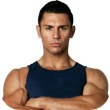
1. Weight Lifting
This is because weight bearing exercises encourage strong bones and increase bone density. With age, bones become weaker, it’s important to keep them strong. Also, every year, muscle deteriorates so stimulating them keeps the body strong and young!
2. Yoga
Lack in flexibility is a lack in quality of life! Being able to move and stay supple can really make the difference. As the body ages, simple things like reach for something or doing ashore lace can become taxing, keep the body free by keeping its natural range of motion available.
Mario, Personal Trainer – EZHomeFitness

I have worked with senior citizens and some of my best & most satisfying results have come from working with seniors. I have many tips I would offer to seniors since their needs are different than someone younger and in better fitness. However, my top 2 tips for seniors are:
1. You are not too old to exercise. In fact, movement and getting active again has many benefits such as losing weight, increased cardiovascular benefits, increased metabolism, strengthening bone density, relieving muscular aches and many more benefits which as can be seen can be quite helpful to a senior. Of course, any medical history must be taken into account before beginning an exercise regimen.
2. Since many seniors are sedentary I would also say for them to get active by starting out with more of basic things such as walking, stretching and even some light weight-lifting doing basic moves. You want to wake the body up to being active again and slowly add on over time. Before you know it, you’ll be doing things you didn’t think were possible anymore and feeling better than you have in years.
David Osborne, Personal Trainer, Life Coach – Borne-Coaching

Having a number of senior clients including my client John who is 85 I find a mixture of weighted exercise and stretching really helps keep seniors fit and healthy.
I tend to do with them bodyweight swiss ball squats, cable rows, chest flyes, core work etc. A lot of the time I am making sure everything is postural sound as well so we go through a lot of stretches and trigger point massage to release any painful tension spots.
Its quite hard just to list two exercises as I would say its important to do cardiovascular work (cross trainer, cycling, treadmill or even brisk walks outside). Then weights or bodyweight exercises to ward off osteoporosis and keep the metabolism high. And also stretching and trigger pointing to make sure the bodies muscles are tuned properly and aren’t causing distress to the client.
A lot of my senior clients like training because its important to treat them like everyone else, by this I mean to obviously know their limitation but allow them to do exercises they are good at and enjoy.
I usually find exercise is not the issue senior clients struggle with but mostly eating habits which tend to put extra weight on clients which then present problems. So a sound nutritional plan goes a long way.
Shane Haron, Essex Personal Trainer – RealResultsPersonalTraining

1.Weight Training
Resistance training with weights doesn’t necessarily have to be extreme loads at maximal intensity it simply means working against a resistance commonly in the 5-20 rep range.
As we age our muscles shrink which causes a decreased quality of life leaving us unable to perform daily basic tasks and increases the risk of injury.
Resistance training will also increase bone density helping protect against arthritis and osteoporosis.
It positively influences body composition meaning an increase in muscle and decrease in fat which results in a decrease in risk of heart disease and diabetes.
2.Cardiovascular exercise
Cardio provides a great workout for the heart and lungs keeping senior adults fit to perform daily tasks and will also help prevent diseases such as heart disease and diabetes.
It is also an excellent stress reliever as many forms of cardio are activities one performs for the enjoyment and social aspect of it such as badminton etc which will lead to a more fulfilling life.
Kayla Meyer, Sweat Pink Ambassador – BlondesHaveMoreRun

If I could only recommend 2 exercises for seniors it would be weight lifting and any form of cardio. As age increases, bone mass and lean body mass decrease. Lifting weights helps to increase bone density and muscle mass to keep individuals strong. It is important to note that seniors should begin with lower weights and progress slowly to avoid injury. Cardio will help keep the heart healthy, keep blood pressure down, and also aid in neuromuscular coordination and balance. Both weight lifting and cardio will increase an individual’s ability to perform activities of daily living (ADLs).
Chris Hollis, Personal Trainer – ChollisFitness

The two types of exercises I would choose are;
1. Power Walking – This is a very good active sport to help bring blood pressure down and keep that ‘fit’ feeling with seniors who may feel fatigued or get particularly tired very easily. With power walking, it can be very social especially with a group of friends who participate or would like to take part in having a fitness regime so the motivation levels are already increased.
2. Weighted exercises – As you get older, bones become more vulnerable and have a great risk of osteoporosis. Doing weight bearing exercises will help strengthen up the bones to create a good posture preventing kyphosis which is common with those who work in an office, tall people and the elderly. Weights will improve your stability when walking and doing other daily task and activities.
Lydia Di Francesco, MBA, B.Soc.Sc – FitHealthy365

Weight training is something many seniors don’t do, but is very important as it helps maintain muscle mass and keeps bones strong.
One of the best exercises to do is squats. This works all muscles in the legs as well as the core. It’s also helps get the heart rate up and burns more calories than other smaller movements. If squats are new to you, start with just bodyweight but work up to holding weights in your hands.
Another great strength training exercise is push-ups. These help build a stronger chest, shoulders and triceps, all muscles that work when we push or lift things. It also helps develop a stronger core. Start with push-ups from the knees until you are able to do them from your toes.
Dr. Patrick Callas, ND – IslandNaturalHealth

1. Weight training
To increase strength and bone density, which reduces falls and bone fractures. Also it helps maintain proper weight. Low body weight in seniors is a serious concern.
2. Swimming
To help lengthen muscles and the spine. It uses the entire body, including the upper body which is often underused. Plus almost anyone can swim even if they have mobility issues or joint pains.
Heidi Medema, Eco-Fitness Personal Trainer – TheGreenMicrogym

For the senior population fitness is very important. By staying physically active seniors can significantly improve their quality of life. Two general types of fitness that I recommend every senior participate in are functional fitness and mobility exercises.
1. Functional fitness is exercise that prepare people for their daily activities. An example of this for seniors is balancing on a BOSU ball. This helps work stabilizer muscles, which improves balance and strength.
2. Mobility exercises help maintain flexibility. A fantastic exercise for people of all ages are T-spine rotations which are demonstrated in this video: http://youtu.be/GPGz5dimu1k
Hassan A. Tetteh, MD, MPA, MBA, FACS – doctortetteh.com

My recommendations would be:
1. Weight training:
To build muscle mass, improve bone health, and offset muscle wasting.
2. Yoga:
To increase flexibility and reduce stress when combined with meditation.
Dr. Sacha Elliott, Naturopathic Physician, Board Certified in Acupuncture – DrSachaElliott

I would recommend that seniors maintain a stretching and strengthening regime. This may look like 10 minutes per day, five days a week of stretching in order to maintain healthy muscle. Stretching encourages blood flow to tissues, improves elasticity, reduces pain, and prevents falls. My second recommendation for seniors would be to have a daily walking regime built into their schedule. Rain or shine, they should pick a walking partner and get out into the fresh air and (hopefully) sunlight and do a moderate-paced walk for 20 minutes per day, most days of the week.
Brenda Chung, Zumba Tone Instructor – Konfidant1

I would say:
1. Water aerobics – 60 minutes water aerobics 2 to 3 times a week
2. Strength training – 60 minutes strength training 2 times a week
We don’t mind accommodating those of you who skip to the last page to learn ‘whodunnit?’ Or maybe in this case it’s ‘ok get to the point – what are the favorites?’
| Top 2 Exercises For Seniors (as voted by 40 experts) |
| Weight Lifting (27 votes) |
| Walking (12 votes) |
| Yoga (12 votes) |
Well the majority of the experts (27) definitely put weight lifting on a deserved pedestal for its irreplaceable, concentrated ability to most effectively stress your muscles.
In second place came everyday walking, favored by 12 experts. Authorities must consider and recommend somewhat based on the frugality, accessibility and simplicity of an exercise – because these highly influence compliance. Nothing is cheaper, simpler and more accessible than walking and may be why it was picked over weight lifting by a quarter of the experts. They know the exercise we can stick with for the long run is the best one.
In third place is yoga. Twelve experts chose this as the best way for seniors to stay fit knowing you can’t go wrong with an exercise that has stuck around for over 1000 years!
We hope you have found this useful. And if you have please feel free to share with others who might too!
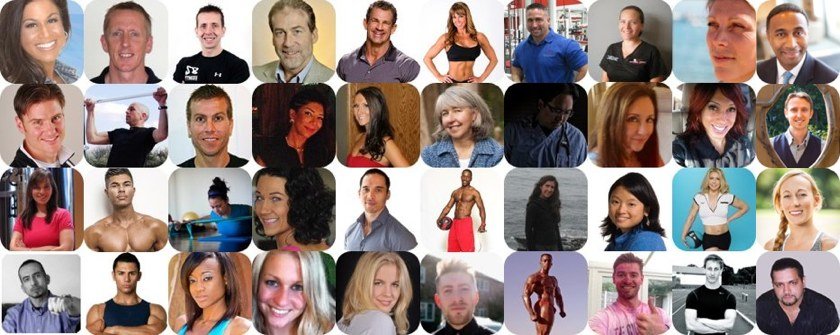




Colin
July 1, 2018 , 3:54 pmWalking is the best then water exercise, some stretching and gardening, I am 76 yrs and still reasonabley active; some of the sugestions are beyond my abilities at this age.